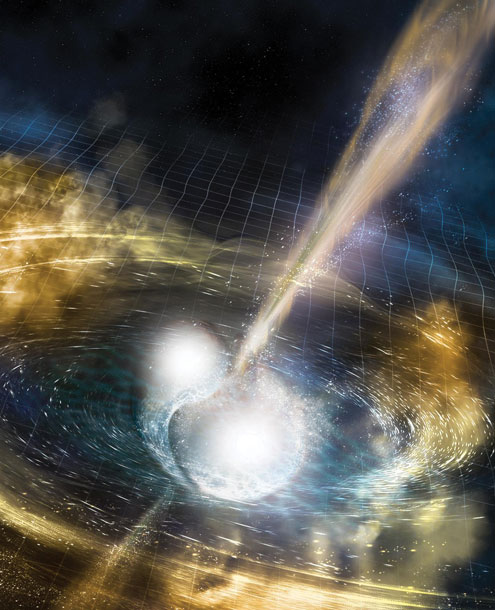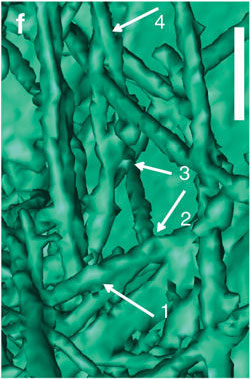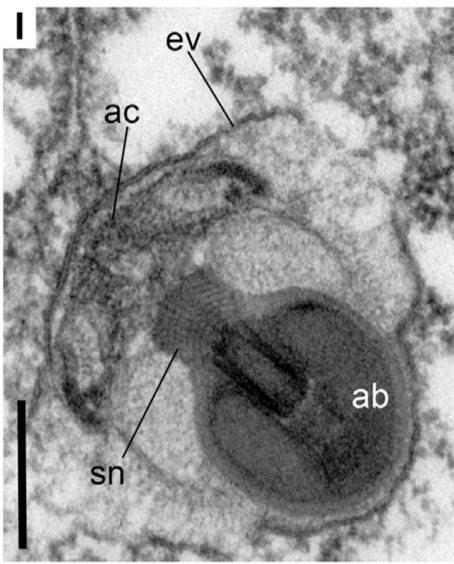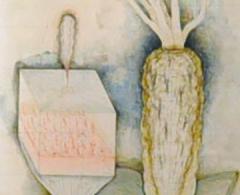
This Article From Issue
January-February 2018
Volume 106, Number 1
Page 14
In this roundup, digital features editor Katie L. Burke summarizes notable recent developments in scientific research, selected from reports compiled in the free electronic newsletter Sigma Xi SmartBrief. Online: https://www.smartbrief.com/sigmaxi/index.jsp
Neutron Star Merger Discovery

NSF/LIGO/Sonoma State University/A. Simonnet
The first direct observation of a merger of two neutron stars—the remnants of massive stars that died in a supernovas—occurred on August 17. Gravitational waves produced by the merger, designated GW170817, were sensed first at two Laser Interferometer Gravitational Wave Observatory detectors. Less than two seconds after that detection, NASA’s Fermi Gamma-Ray Space Telescope registered a short gamma-ray burst. After a rapid analysis of these twin events, more than 70 space- and ground-based telescopes were pointed toward the site of the signals, observing it across the spectrum from radio waves to x-rays. The merger was traced to the galaxy NGC 4993, located 130 million light years from Earth. These observations will give astronomers a look inside neutron stars, and an opportunity to study their composition. The observations confirm that gamma-ray bursts shorter than about two seconds originate from neutron-star mergers. GW170817 also resolved a question about the origin of elements heavier than iron, such as silver, gold, and platinum. The data indicate that some, and perhaps all, of these elements come from the rapid neutron capture process after such a merger.
Cho, A. Merging neutron stars generate gravitational waves and a celestial light show. Science doi:10.1126/science.aar2149 (October 16) [The full set of papers is listed at the end of this article.] Nature 551(7678):5–128 (November 2) [Full list of papers here: http://go.nature.com/2k1BpLn]
Curbing Mussels’ Invasion
A lubricant-infused material could prevent the spread of invasive mussels and other invertebrate stowaways on ships. By preventing mussels from latching on to a surface, the infused silicone material, called 3D polydimethylsiloxane, can stop them from gaining new footholds. In laboratory tests, invasive Asian green mussels (Perna viridis) didn’t recognize the surface as one they could latch on to. In field tests, the mussels also failed to adhere to the surface. This material was already being commercialized for preventing blood or bacteria from adhering to a medical device’s surface. Now, its applications also include this way of addressing an environmental problem.
Amini, S., et al. Preventing mussel adhesion using lubricant-infused materials. Science 357:668–673 (August 18)
Preventing Malaria Transmission
Two studies affirm the promise of genetic modification of mosquitoes to curb malaria transmission. Malaria is caused by a pathogen that lives in mosquitoes’ guts. One study focused on whether mosquitoes with genetic modifications that make them more resistant to the malaria parasite are able to spread. The genetically modified males preferred wild-type females, and normal males preferred mating with genetically modified females. In a single generation, the trait spread through 90 percent of the population. In the second study, a team genetically modified bacteria in the mosquitoes’ microbiome to secrete a substance that prevented the growth of the malaria-causing parasite, Plasmodium. Because the selected bacterium lives in male and female reproductive organs, as well as in the gut, it can be passed down through generations. Both approaches need to be tested further to ensure they work outside the lab.
Pike, A., Y. et al. Changes in the microbiota cause genetically modified Anopheles to spread in a population. Science 357:1396–1399 (September 29) Wang, S., et al. Driving mosquito refractoriness to Plasmodium falciparum with engineered symbiotic bacteria. Science 357:1399–1402 (September 29)

Nature Communications 8, Article Number: 55 (2017)
Fungi in Earth’s Deep Crust
A partially fossilized fungus was found in a vein of quartz from Sweden 800 meters underground, during a search for nuclear storage space. The biome of the deep continental subsurface is largely unexplored. This unnamed fungus is the first found to have grown in deep bedrock and hints at a greater deep-Earth biodiversity than had been recognized before. In such a sealed-off location the fungus must have been anaerobic, raising questions about what it fed on. Although there was no direct evidence of other life at that depth, the pyrite crystals surrounding the fungal filaments were enriched with sulfate, commonly associated with sulfate-reducing microbes. If such microbes had been present, they could have had a symbiotic relationship with the fungus as part of an underground ecosystem. The presence of deep fungal life could complicate plans for storing toxic and radioactive waste, because such microbes may dissolve or corrode containers.
Drake, H., et al. Anaerobic consortia of fungi and sulfate reducing bacteria in deep granite fractures. Nature Communications 8:55 (July 4)

Janouškovec et al., 2017, Current Biology 27, 3717–3724
New Protist Lineage
A new species of unicellular organism complicates the story of early evolution in eukaryotes—the domain of life that includes organisms with a nuclear membrane around protein-bound DNA and with organelles such as mitochondria. The organism is a protist—a group of mostly one-celled eukaryotes that are not fungi, plants, or animals—and was named Ancoracysta twista. It was found in an aquarium at the Scripps Institute of Oceanography and was recognized as unique when its genetics couldn’t be reconciled with any known lineage. Eukaryotes with longer mitochondrial genomes are thought to dwell closer to the root of the domain’s family tree. A group of protists called jakobids have 60 genes on their mitochondrial genome, compared with humans’ 13, and so were thought to be one of the earliest branches on the family tree. A. twista has 47 genes but is not closely related to jakobids.
Janouŝkovec, J., et al. A new lineage of eukaryotes illuminates early mitochondrial genome reduction. Current Biology DOI:10.1016/j.cub.2017.10.051 (November 22)

American Scientist Comments and Discussion
To discuss our articles or comment on them, please share them and tag American Scientist on social media platforms. Here are links to our profiles on Twitter, Facebook, and LinkedIn.
If we re-share your post, we will moderate comments/discussion following our comments policy.